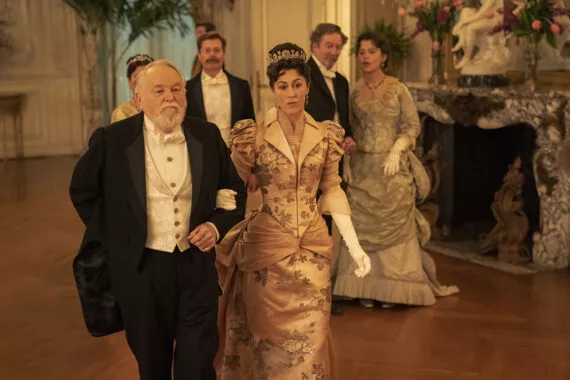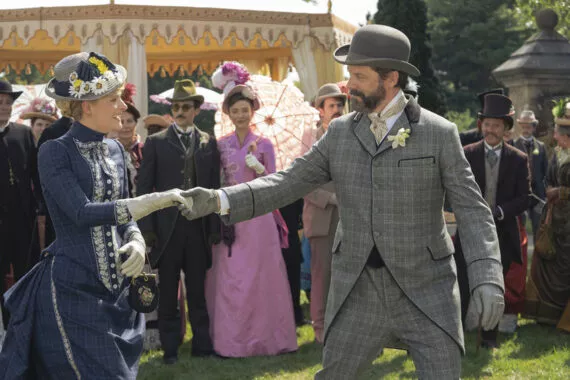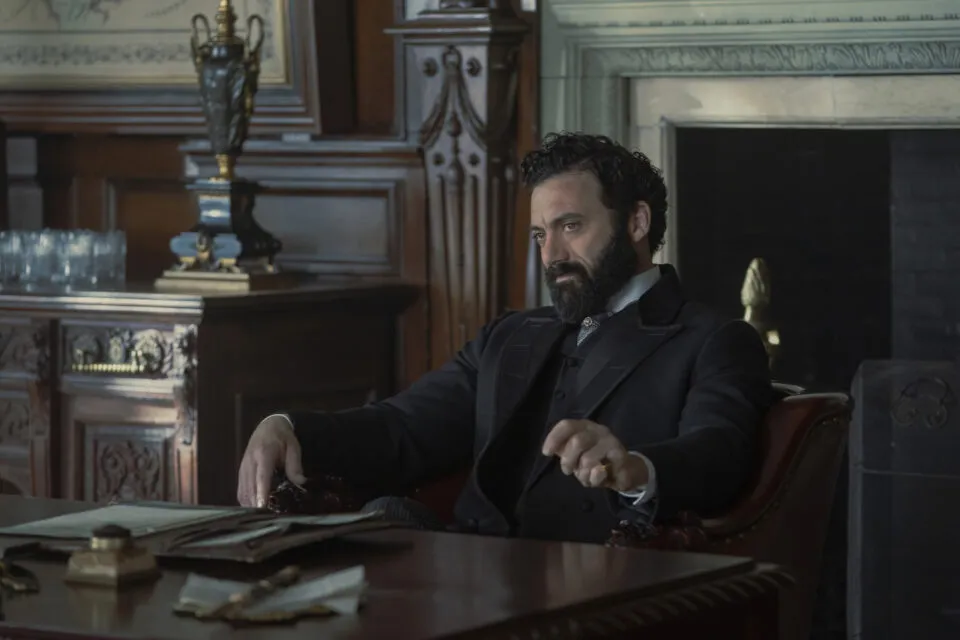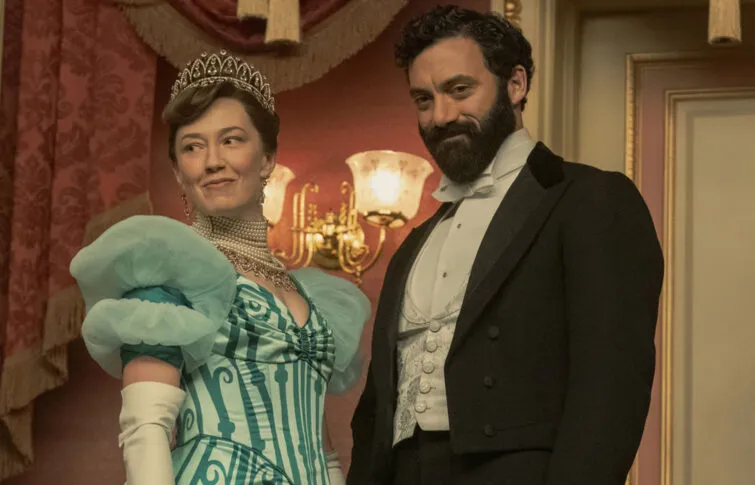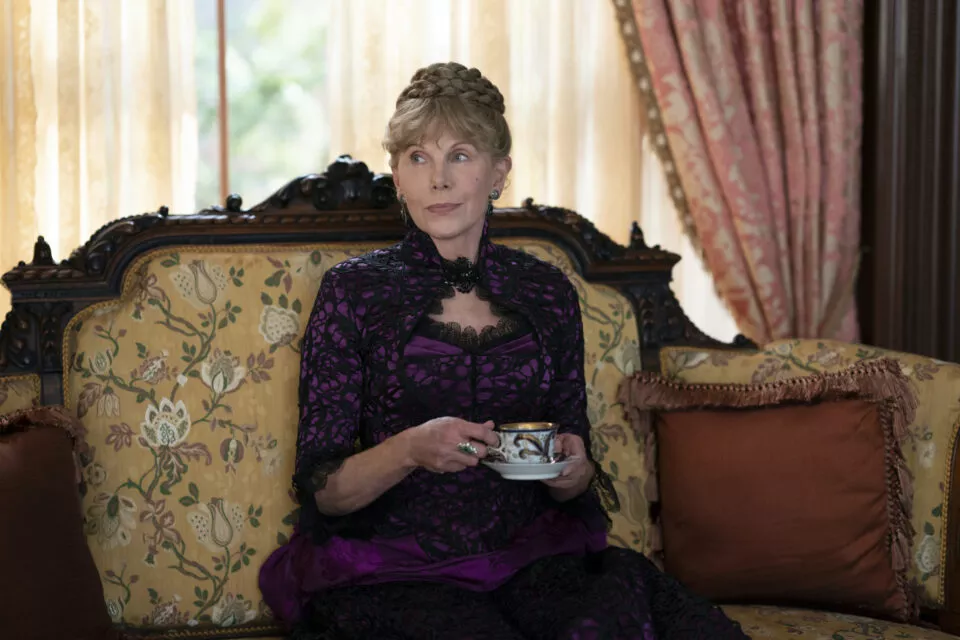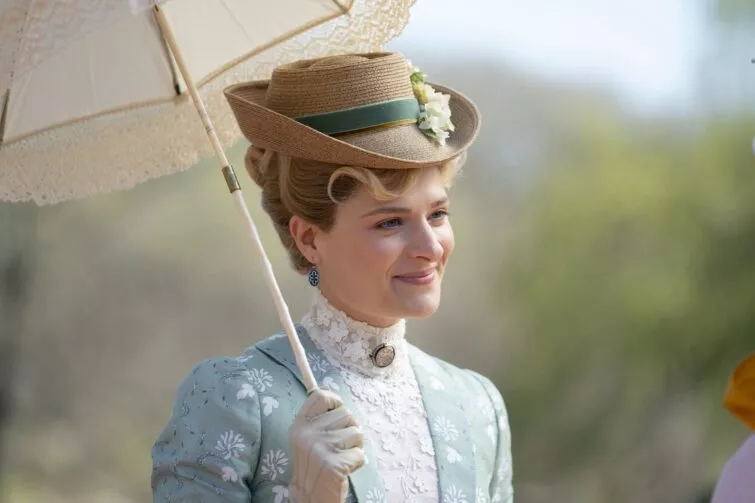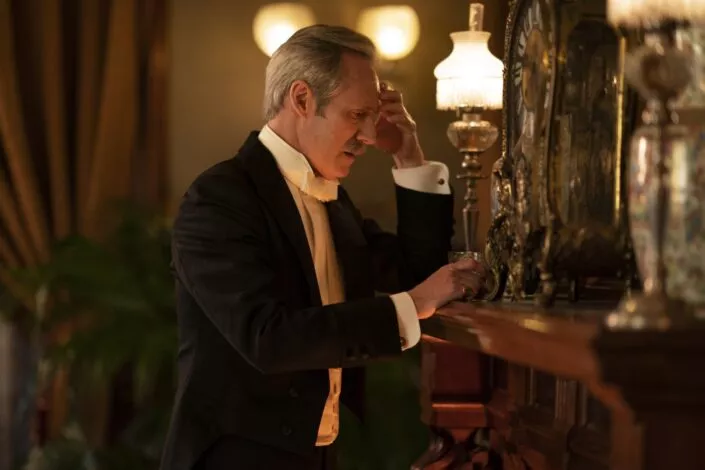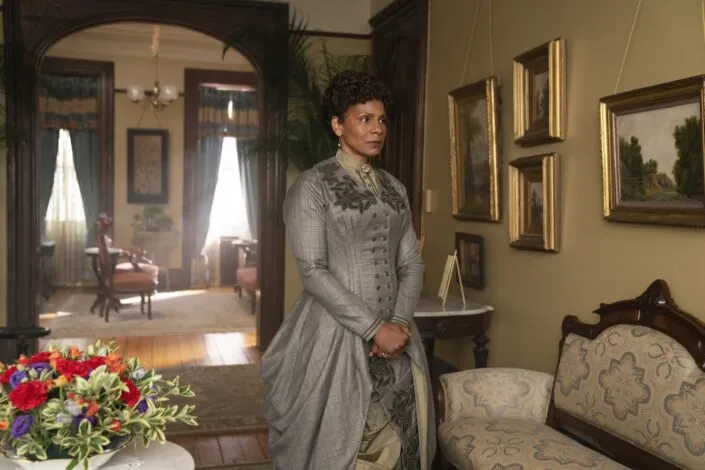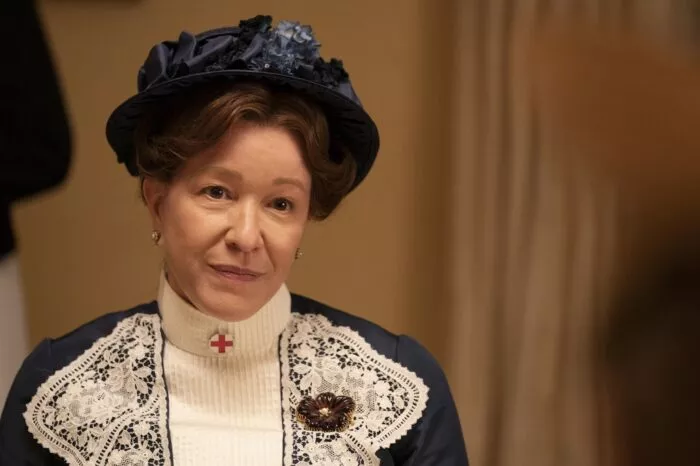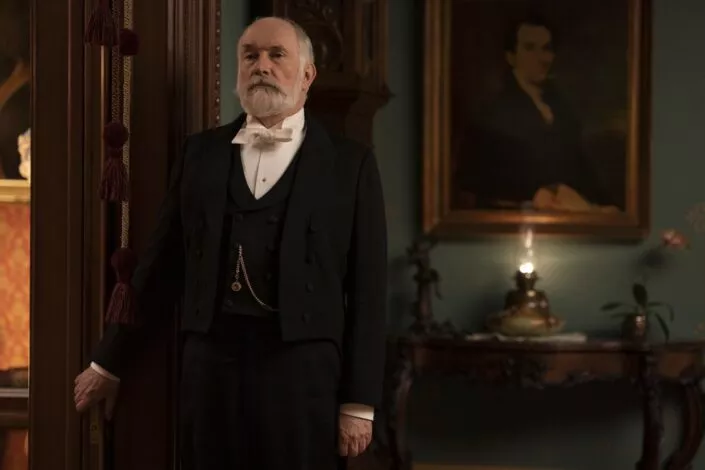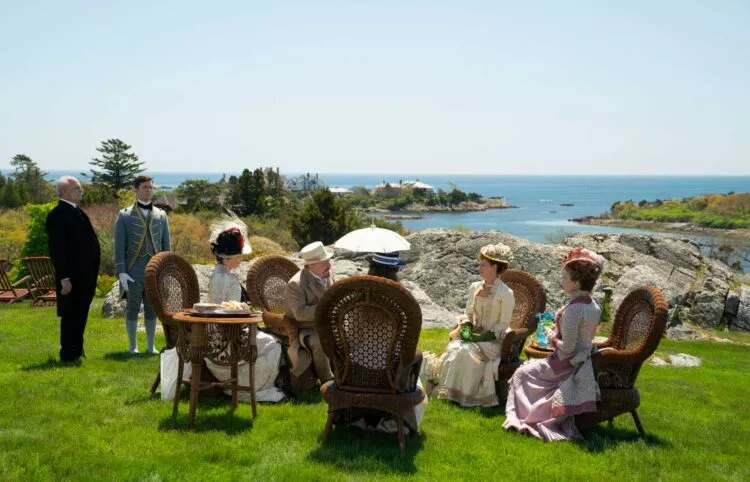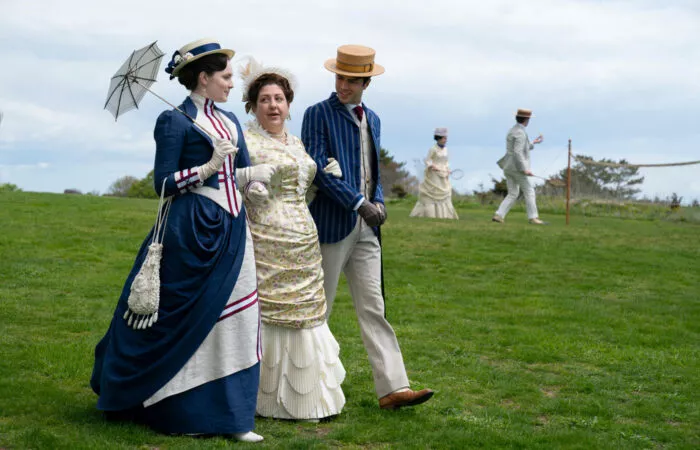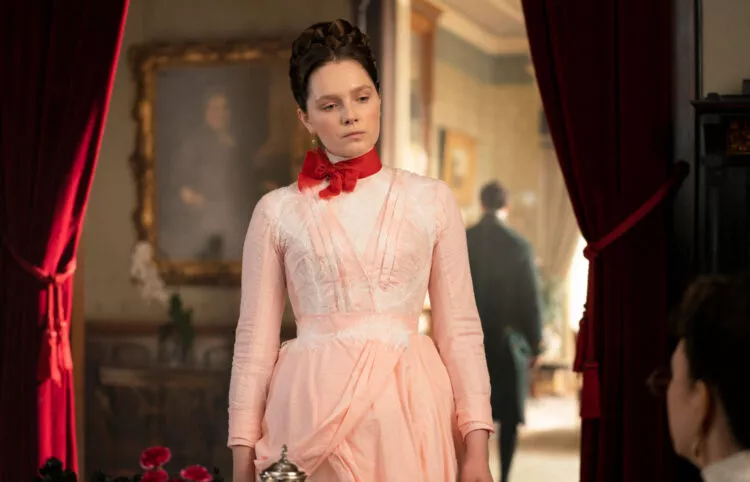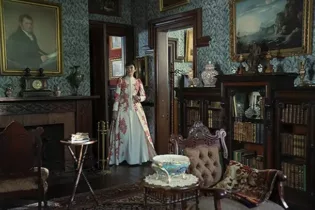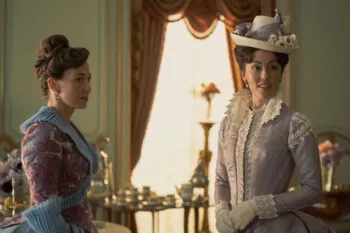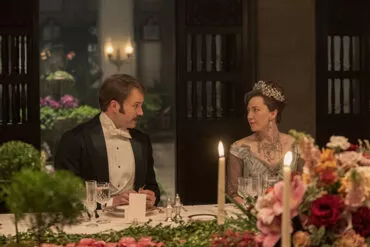Season 2, Episode 1, “You Don’t Even Like Opera”
The Elms appears as the Russells' newly acquired Newport home. Bertha goes against the establishment by supporting the new Metropolitan Opera. Agnes van Rhijn and her niece, Marian, have a falling out.
In this Episode…
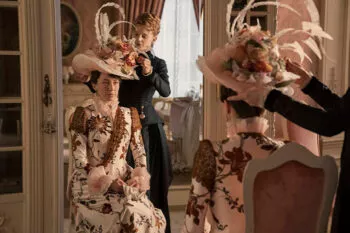
☞ The episode opens on Easter Sunday, 1883, with the unboxing of Easter hats, many of which are festooned with elaborate feathers. At this time, the harvesting of feathers from exotic birds had been a craze for about a decade. Conservation efforts to protect bird populations would not gain momentum in the United States until the turn of the century.
☞ In the opening montage we see Agnes in the Grey Bedroom at Chateau-sur-Mer, Oscar in the Butternut Dressing Room at Chateau-sur-Mer, and Gladys in Mrs. Berwind’s Bedroom at The Elms.
☞ There is an offhand mention of the upcoming ball to be given by a Mrs. Rutherfurd, which may refer to Margaret Stuyvesant Chanler (1820–1890), wife of Lewis Morris Rutherfurd and mother of Winthrop Rutherfurd, who had a romance with Consuelo Vanderbilt of Marble House before she married the Duke of Marlborough in 1895.
☞ The Noble and Holy Order of the Knights of Labor, founded in 1869 by Philadelphia tailors, reached its peak of activity in the 1880s.

☞ The van Rhijns’ scullery maid Bridget attends Mass at St. Patrick’s Cathedral, which butler Bannister notes is new. Although construction had begun on the cathedral before the Civil War, the Gothic Revival cathedral was not completed and dedicated until 1879.
☞ Agnes van Rhijn uses an internal bell system to ring for Bannister. Several of the Newport mansions made use of such systems to communicate with staff.
The Elms
☞ The Elms stands in for the mansion Bertha Russell purchases in Newport, but in the show the mansion’s grounds stretch to the sea – an astonishing sight, because the real Elms does not have an ocean view.
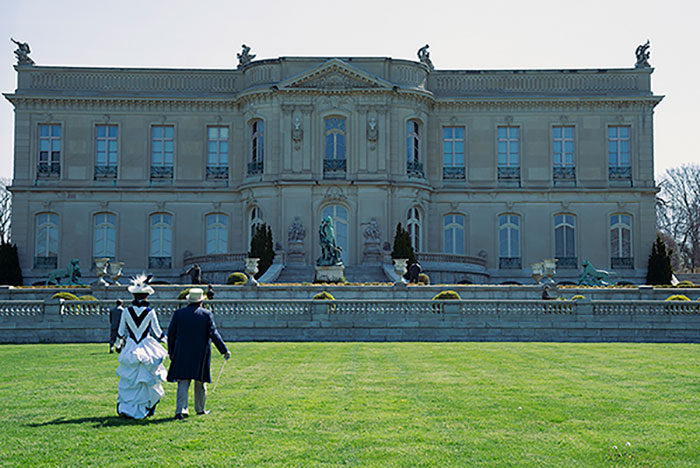
Photograph by Barbara Nitke/HBO
☞ We see The Elms’ broad back lawn and statue-decorated terrace as Bertha Russell and Ward McAllister walk toward the house.
☞ McAllister says the house was built around 30 years ago. With the show set in 1883, this would date it to the early 1850s. In reality, The Elms was built from 1898 to 1901, in a Neoclassical style that did not exist in Newport in the 1850s.
☞ “You’ve conquered New York,” McAllister tells Bertha. “Now it’s time to conquer Newport!”

☞ Once inside, The Elms’ first-floor gallery is instantly recognizable with its distinctive white Breccia marble veined with gray and purple. Bertha’s son Larry, an architect, joins her and McAllister and talks about improvements he has already made to the house.

☞ Bertha Russell’s tour of the house continues with the Ballroom and Drawing Room (which Larry refers to as “the old library”).
☞ As in Season 1, the kitchen areas of The Elms are seen frequently as the kitchen of the Russells’ New York home.
Historical notes
☞ At dinner with the van Rhijns, we briefly see both Agnes and Ada wearing deep, vibrant shades of green which would not have been possible a few decades earlier. The development of synthetic dyes in the mid-19th century allowed for brighter colors. Aniline dyes were a product of the coal industry, being extracted from coal tar.

Photograph by Barbara Nitke/HBO
☞ Mrs. Scott, Peggy’s mother, describes being harassed by white men on the day she met Peggy’s father. This event would have taken place before the Civil War, and possibly after the passing of the second Fugitive Slave Act in 1850. While we do not know Mrs. Scott’s back story, this harrowing experience for her as a woman would have borne an extra racial threat.
☞ Now that Gladys Russell is “out” in society, she wears her hair up. At the white-tie dinner her mother gives for opera lovers, Gladys, Marian Brook and Carrie Astor do not wear tiaras as the married women do, in keeping with traditional etiquette.
☞ Railroad magnate Jay Gould appears in a meeting of businessmen with George Russell – interesting, because Gould is often cited as the historical precedent for the fictional Mr. Russell.
☞ The opera singer Christina Nilsson, whose performance closes the episode, was a real person and she did sing in Gounod’s “Faust” at the opening of the Metropolitan Opera in October 1883.
